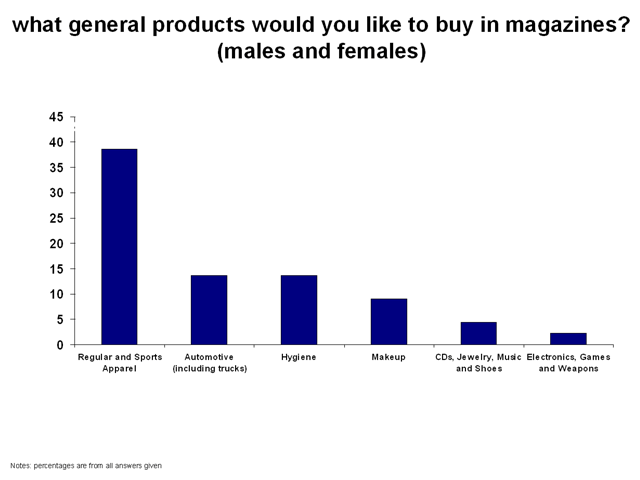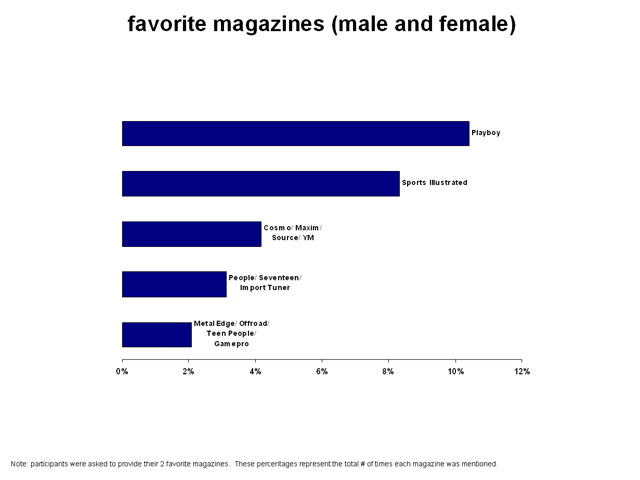Media
Report
***********************************
Measuring Media Investments Without Measuring Reach - Media Becomes
Interesting Again
By Al Berrios
(contact Al Berrios)
Skip to
> Why Media Was Dull
> What About the Audience
> Measuring the True Value of the Media Consumer
Media planning and buying agencies have had an argument for the last decade - that their ability to select media is just as creative, and definitely more scientific, than ad agencies' advertising.
With so many choices reaching such a fragmented audience, media buyers had to maximize their clients' budgets to make sure the right people were being reached. A well-placed TV ad was all you really needed before media planning and buying. Today, the streets we walk on are media, and our attention is such that frequency has to match reach. Luckily, budgets are bigger and commissions agnostic, so, according to Merrill Lynch's Lauren Rich Fine's latest article in "Advertiser", clients truly get their money's worth.
 |
Now, about that scientific part. We believe the leaky dam of media measurement finally gave-way with Rosie's failed magazine, where lawyers brought to light major circulation discrepancies in the magazine publishing industry. This prompted justification of figures by the industry, regardless of third-party guarantees of circulation figures. A deluge ensued when Nielsen (the only recognized broadcast industry measurer) revamped their audience and measuring methodology, which resulted in major discrepancies in the demographics advertisers believed to have been already reached. These things occurred as the internet has continued to increase their weight in media plans (because more consumers are online, regardless of the dot-com shake-out); and ferocious debate about the ludicrously high prices to reach a dwindling television audience. And finally, with the recent unprecedented double-whammy circulation re-statements from Tribune and Hollinger International (1), the force of the water rushing down the mountain will ultimately clear the way for a different business model for the marketing business than we have today.
Today, Nielsen (television) and Arbitron (radio) dictate how over $50 billion dollars gets spent by advertisers (2). Out of home, despite being the oldest medium, still doesn't have the sort of industry standard measurement broadcasting does. And print, despite assurances from the Audit Bureau of Circulations that publishers deliver what they say they deliver, has a process so antiquated, it takes months to actually prove what an advertiser paid for months earlier, allowing opportunities for fraud on the part of the publisher. Oh, and the internet currently has the Nielsen Netratings and comScore networks to verify website counts, however, given the limited number of unique visitors in general (the industry gauge to determine performance, defined as those internet visitors that visit a site for the first time), it's dubious to believe that some sites are still achieving tens of millions of unique visitors per month.
The irony is that advertisers are fully aware of these issues, and yet continue to make their investment decisions based on them. It's absurd to imagine that billions of dollars are invested based on one or two sources of information, but they are in the media world. Sure, one could just start a competing measurement service, however, "institutional" competition is staggering, making it extremely cost-prohibitive for those brave souls that have tried (and regrettably failed.)
Thus, the numbers always stay the same and the business of media planning is consequently a matter of picking the best selection of numbers for the lowest price. So is media a mundane commodity business? In this perspective, yes.
At a recent print industry gathering hosted by the Association of National Advertisers, buyers and sellers locked horns about the role of print media. Buyers were rightly concerned about their creative winning more sales than awards and their print media vendors approaching them as a component of their entire marketing mix; sellers, naturally, believed they should command a greater piece of the marketing budget because of all the amazing print products they offered, including product integration into editorial.
But what about the audience? Allow us to lay out the context: media has fragmented, taking consumers with them, thus making it unimaginably difficult to reach them en mass, like it used to be circa 3-network-television days. Because media buying as a service was created for advertisers, it looks simply at how it can get its message out without any true sense of the value of the message recipient. And like any business unit, it needed standard gauges on which to understand its investment into media. Thus, reach has always served well.
But what if media buying originated from the editorial side of media? What if media buying always considered consumer involvement with its product? Wouldn't that guarantee a greater response for the advertiser? Common sense tells you, "sure", but common sense isn't scientific enough; interest in content is subjective, and therefore difficult to measure. (Here, too, there's another irony - advertisers understand this, but because many media sellers have traditionally seen themselves as competing for a limited budget from other media sellers, it's difficult to focus on anything other than reach.)
Measuring The True Value of the Media Consumer
In a recent al berrios & co. study to be published this week, we take a look at how some publishers in the magazine industry have made a shift towards considering the needs of their readers over those of their advertisers, with some promising response from their readers. The studies asked readers about their favorite magazines, where they read them, and if they'd consider purchasing anything from them.
Although simplistic in nature, the answers given all had one underlying implication - that publishers of ranked magazines all made serious efforts to "extend their brands" in efforts to build a community amongst their readers.
The implications of this focus are highly desirable; if planned properly, focusing on reader interest will inevitably reduce reach and print runs, but will also decrease printing and distribution costs. More strategically, it will permit enhanced profitability by relying more on incremental subscription rate increases, higher ad rates (to reach a more involved reader) and even opening pages as a potential sales channel.

Publishers' own marketing becomes more holistic and attractive to the advertiser, as they seek to identify their brand with yours. After all, publishers never started out selling eyeballs, but rather their relationship with their readers.
Although the prospect of reducing reach may be anathema to publishers, consider that no media brand will ever again aggregate consumers like TV Guide, Home & Garden, and (the recently closed, as of September 2004) Life magazine used to; so as niche becomes the default model, publishers should consider investing in quality, not quantity (i.e. multiple low-quality titles).

Interestingly, our findings support those recently found by the MPA (3). Our research does not aim to guide creative, but rather add to the overall body of research that the nature and level of the relationship consumers have with their media is a more powerful guide to determine the value of that audience to the advertiser. Our research can aid in selecting optimal media for buyers, however, should be used as additional evidence supporting the debate over the relevance of current standards used to judge all media investment.
RELATED
AL BERRIOS & CO. ARTICLES:
> "The Optimal Structure for Corporate
Marketing Departments"
> "Analysis of Favorite Consumer Magazines"
RELATED ALBERRIOS.COM CHANNELS:
> Marketing Communications
RELATED ALBERRIOS.COM SECTIONS:
> al berrios & co. coverage on the publishing
industry
> al berrios & co. research on the media industry
> al berrios & co.'s latest thinking on consumer media habits
> review media industry-related events organized by al berrios & co.
> al berrios & co. analysis of the latest thinking in the publishing industry
> learn more about the media industry
> al berrios & co.'s latest thinking on the media industry
> news about the media industry
READ MORE:
(1)
"Publishers
Face Credibility Doubts"
(2) Source: "Insider's Report: Robert Coen Presentation on Advertising Expenditures, December 2003, Universal McCann", PDF format; al berrios & co. analysis
(3)
Source: "Highlight
from the Magazine Reader Experience Study", PDF
format
Disclaimer:
The recommendations, commentary and opinions published herein are based on
public information sometimes referenced via hyperlinks. Any similarities or
likeness to any ideas or commentary from any other sources not referenced
is purely coincidental. al berrios & co. cannot control any results occurring
from advice obtained from this publication nor any opinion(s) conveyed by
any reader of this publication.
(c) 2001-2005. All Rights Reserved. al berrios & company, inc. Published
by al berrios & co. This Report may not be reproduced or redistributed
in any form without written permission from al berrios & co., subject
to penalty.